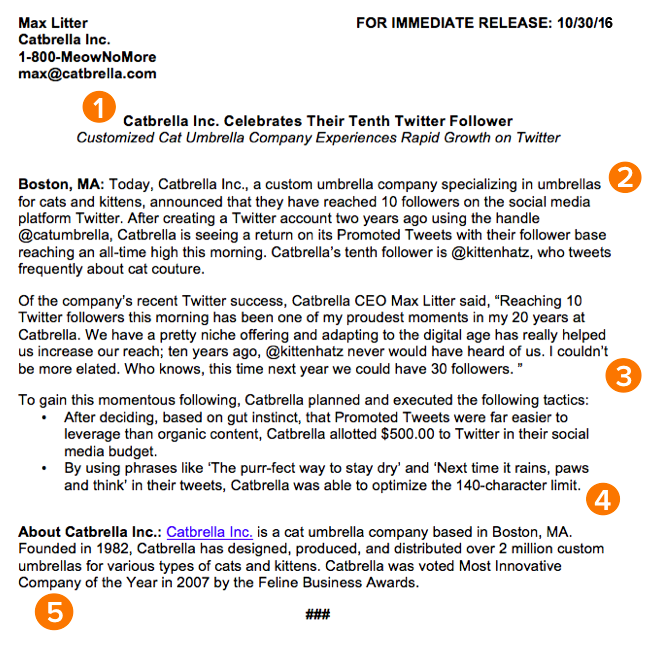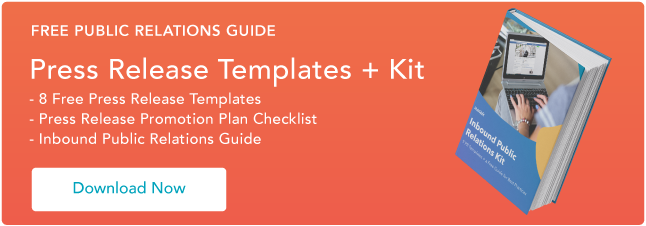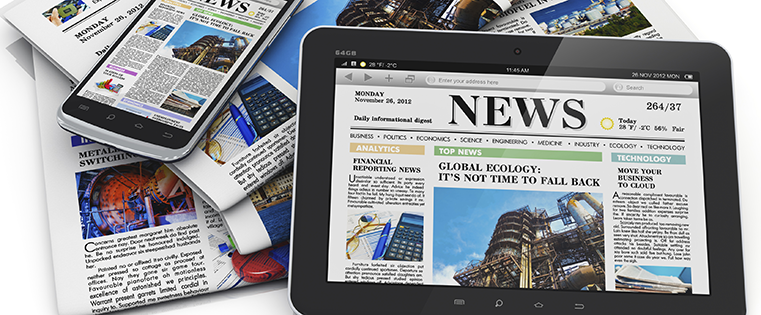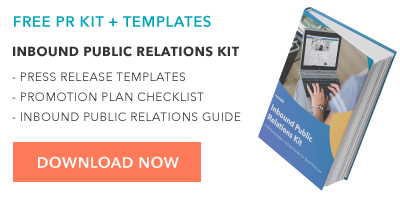When it comes to content, sometimes old school can be a good thing (namely, when it comes to old school rap or Throwback Thursday on Instagram). But when it comes to your company's public relations strategy, being old school isn't advantageous for your business or your brand.
Ten years ago, people still relied on morning papers for news. Today, the vast majority of your company's customers and prospects scan headlines on Twitter or see what’s trending in their Facebook feed. 
People now have control over where, when, and how they consume information. As a result, public relations is no longer about feeding into a traditional news cycle; it's about providing relevant content when, where, and how your prospects, influencers, and customers will consume it.
Sounds pretty hopeless, right? Wrong. While relationship-building still helps you get into popular publications, we now have the opportunity to quit playing the waiting game and generate our own buzz. By turning your PR strategy into an inbound one, you create opportunities that weren’t there before and carve out a place for your company, building meaningful mindshare with your target audiences in the process.
One of the most crucial updates to make to your PR strategy is to think of press releases as an opportunity to connect to the audiences you care about -- including, but not limited to, reporters.
What Is a Press Release / News Release?
Whether we call it a "press release," a "press statement," a "news release," or a "media release," we're always talking about the same basic thing: an official announcement (written or recorded) that an organization issues to the news media and beyond.
Most press releases are succinct at just a page long. Two pages tops. Ultimately, companies want to provide enough information so that news outlets have sufficient material for publishing their own stories about whatever the company is announcing in the release.
And while it may be tempting to craft a press release that embellishes your company's accomplishments or twists the facts to make a story sound more intriguing to the media, remember: Press releases live in the public domain, which means your customers and prospective customers can see them. So instead of thinking of a press release solely as a ticket to earning news coverage, you should also think of it as a valuable piece of marketing content.
When Should I Distribute a Press Release?
While there's no cut-and-dried formula for when a press release should be written (and distributed), here's a few reasons when it's a good idea:
- New product launches
- Updates to existing products
- Opening a new office
- Introducing a new partnership
- Rebranding
- Promoting/hiring a new executive
- Receiving an award
A regular cadence of (meaningful) news can help a company stand out and build mindshare with journalists over time, so that's where the press release (or news announcement) comes in.
Press Releases Can Be a Viable Content Type
Many people think press releases have to be chock full of buzzwords and branded terms. Big data anyone? Five syllable words you have to look up on Thesaurus.com? Quotes from every executive on the planet that go on for pages? We've seen it all. Unfortunately, so have reporters -- and they are not fans.
So instead of stuffing your next release with jargon, take a page out of our book (okay, fine, ebook), The Newsworthy Guide to Inbound Public Relations, and brainstorm some creative approaches for your next announcement. Can you include new data? A remarkable graphic or video? A shareable SlideShare? If so, a creative angle will often help carry your content and increase the likelihood of social sharing.
Even so, a press release can still be a really valuable medium for communicating news to your audiences. You just have to make it readable, relevant, and relatable.
We have crafted this comprehensive, easy-to-follow press release template complete with a promotional plan and considerations for your next announcement. We use these same guidelines when writing our releases here at HubSpot and created a faux, sample release to illustrate what content goes where and why.
How to Write a Press Release [With Example]
You've got your announcement in mind, and now it's time to get it down in words to share with your community, industry, and followers. Take Catbrella Inc., a fictitious ad agency, which just gained its 10th Twitter follower after two years of paid social media efforts. To announce its achievement, Catbrella could issue a press release like the one we've dissected below.*
Sample Press Release:
*Disclaimer: HubSpot is entirely responsible for the silliness of this faux announcement.

Rule 1: Make Your Headline Irresistible
Just like writing the perfect blog post title, setting up your press release for success starts with your headline. You only have one line to work with, which can seem scary, but consider diction carefully to make your headline captivating.
Use action verbs, clear, understandable language, and keep your headline simple and short -- fortune (and search engines) reward the brief, so keep your title to one line to clearly focus people's attention on your topline message.
Most importantly, make it interesting: Keep in mind that reporters get dozens, if not hundreds, of releases each day, so invest the time to write a compelling headline. It's worth the time and effort on your part.
Rule 2: Don't Play Hard to Get
For reporters, analysts, influencers, or followers to be inclined to share your announcement, you have to tell them upfront why they should care.
The first paragraph of your release should cover the who, what, why, where, and how of your new launch, update, or development. Reporters don't have a ton of time to sift through details and fluffy background information -- they just need the facts that'll help them tell your story to someone else from a position of authority.
There shouldn't be any new, crucial information covered after this section that the reader could potentially miss.
Rule 3: Offer a Tempting Quotable
Once you've set the scene, it's time to bring your details to life with a quote that reporters can use for context around your announcement and help paint a picture of how your news affects the given industry, customer base, and landscape.
Ideally, quotes will be from key stakeholders in your company including your executive team, project leads, or those directly impacted by your announcement. Quoting key figures and authorities underlines the importance of your development. The chosen quote should shape your narrative and emphasize the core of the announcement. Don't ask everyone in your office for a comment or feel compelled to quote all 25 people included in the acquisition -- pick one or two critical spokespeople and focus the quotes around their unique perspective.
Rule 4: Provide Valuable Background Information
In this last paragraph, keep in mind that the reader already has all of the vital details and information they need to file a story or spread the word.
It can be tempting to provide superfluous facts and tidbits about your company or the development of your announcement -- we sometimes think a piece of writing is lacking if it isn't drawn-out and just shy of being a novella. However, a press release needs to be helpful and concise.
Offer details here that strengthen your narrative, like creative or noteworthy ways your company developed the project or announcement at hand. Or, when applicable, comment on future implications of your announcement.
Rule 5: Make the "Who" and "What" Obvious
Twitter is chock-full of reporters lamenting press releases or pitches that don't clearly explain what the company does or what the announcement is actually about, so instead of being the butt of a joke, make your release incredibly easy to reference.
Describe what your company does in clear, plain English, include a link to your company's homepage early on, and make your boilerplate succinct and straightforward. If you cite data, include a reference link for the data source, and make sure every name in the release has an associated title and company as well.
To keep yourself honest on this front, ask a friend or colleague to read the release without context and ask if they can easily and readily explain why the announcement matters, what your company does, and why the executives included are quoted. If the answer to any of those questions is no, get back to the drawing board.
The key to keeping your PR strategy new school is forgetting preconceived notions of what public relations is and instead focusing on creating highly remarkable content. Traditional press releases can still be really valuable when executed well, so instead of ditching releases as a tactic, give them a modern makeover to make them more useful for your marketing.
Think about how you've used inbound methods to transform your marketing strategies to be more personalized, approachable, and build relationships. Those same principles apply to your PR strategy: Create content to craft your own story and use tactful outreach to get reporters and analysts familiar with your brand.
Tips for Publishing Press Releases
Writing a press release is really only half the battle. Once you're finished with production, it'll be time to focus on distribution.
Of course, we're all familiar with the traditional distribution levers we can pull, which include publishing the press release on our website/blog, as well as sharing the press release with our followers/subscribers via social media and email. But for ensuring a press release gets the maximum amount of distribution possible, here are some tips you can follow.
1) Reach out to specific journalists.
Instead of blasting a press release out to every journalist you can find an email address for, focus on a few journalists who have experience covering your industry (and company, hopefully) and send them personalized messages. Connect the dots. Show why what you wrote connects to what they write.
2) Don't be afraid to go offline.
Most journalists have mountains of emails (and press releases) to sort through. Try sending your release through snail mail or another offline channel to differentiate yourself.
3) Send the release to top journalists the day before.
Give journalists some time to craft a story around your press release by sending it to them -- under embargo -- the day before it officially goes live. (FYI "under embargo" just means they aren't allowed to share the information in the press release until the time you specify.)
4) To avoid competition, don't publish your release on the hour.
If you're publishing your press release on a distribution service like PR Newswire or Business Wire, avoid publishing it on the hour (e.g., 1 p.m., or 3 p.m., or 5 p.m.). The reason? Most companies schedule their releases to go out on the hour, which means if your release goes out on the hour too, it's more likely to get lost in the shuffle. Instead, try going with a more distinct time (e.g., 1:12 p.m., or 3:18 p.m., or 5:22 p.m.).
5) Share your media coverage.
If all goes according to plan, and your press release gets picked up by the media, your job still isn't finished. To keep the buzz going, you can release a "second wave" of distribution by sharing the specific stories that news outlets write based on your press release.
What other best practices do you follow when writing press releases? Share your thoughts with us below, and don't forget to download our free press release template here.
Editor's Note: This post was originally published in October 2013 and has been updated for accuracy and comprehensiveness.

from HubSpot Marketing Blog http://blog.hubspot.com/marketing/press-release-template-ht
Via http://blog.hubspot.com/marketing/press-release-template-ht


No comments:
Post a Comment